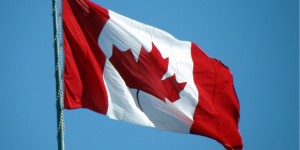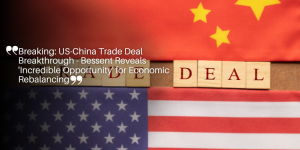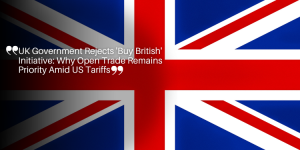Navigating Tensions: Canada Faces Tariff Trade-Offs in New U.S. Deal
A Shifting Trade Landscape Between the U.S. and Canada
As negotiations between Canada and the United States continue under a renewed sense of urgency, Prime Minister Mark Carney has acknowledged that the path to a refreshed trade agreement may involve accepting certain tariffs. The statement comes amid escalating economic pressure and shifting geopolitical strategies spearheaded by the Trump administration.
Speaking to the press ahead of a cabinet session in Ottawa, Carney admitted—first in French—that every trade negotiation initiated by Trump’s administration has included tariff provisions. This stark observation points to a growing realization in Canada: full tariff exemptions might no longer be on the negotiating table.

What Carney Actually Said
During his remarks, Prime Minister Carney explained that “there’s not a lot of evidence right now” suggesting the U.S. would be willing to completely eliminate tariffs in any potential deal. His comments, relayed through CBC News, signaled a more pragmatic stance than in earlier stages of the trade dispute. While careful not to confirm whether Canada would formally agree to U.S.-imposed levies, the Prime Minister left the door open for compromise—provided the agreement meets Canada’s national interest.
This pivot, however, has drawn criticism from both the political opposition and some economic analysts, who view it as a potential retreat in the face of Trump’s hardline tactics.
The Trade War Timeline: From Conflict to Concession?
Since Donald Trump returned to the Oval Office in January, his administration has revived aggressive trade policies, including a series of sweeping tariffs affecting both allies and competitors. Canada, one of the United States’ closest trading partners, has been caught in the crossfire.
-
In early 2025, the Trump administration imposed a 25% tariff on Canadian goods, targeting key sectors like automotive and raw materials.
-
Last week, the White House announced its intention to raise that duty to 35%, effective August 1.
-
A global 50% tariff was added on aluminum and steel imports, further damaging Canada’s industrial exports.
-
Cars and trucks not assembled within U.S. borders have also been hit with a 25% tariff.
-
A new 50% duty on copper will take effect next month, escalating the confrontation even further.
These measures have been described by many as protectionist and punitive. Still, Trump has defended them as part of his “America First” policy to revitalize U.S. manufacturing and reduce trade deficits.
Canada’s Countermeasures: Holding Firm Under Pressure
In response, the Canadian government enacted a series of retaliatory tariffs, targeting U.S. goods such as agricultural products, machinery, and consumer goods. These countermeasures aimed to pressure Washington into negotiating in good faith, while also supporting domestic producers affected by U.S. policies.
Yet, despite these efforts, Carney has remained cautious. At the G7 Summit in June, he reaffirmed Canada’s red lines: “We will only sign a deal that serves Canada’s best interest.” He also reiterated that additional counter-tariffs would remain an option if progress stalled.
Why the Stakes Are So High for Canada
Canada is particularly vulnerable in this trade dispute due to its export-heavy economy. Over 75% of Canadian exports are sent to the United States, and several sectors—especially automotive, aluminum, and metals—are highly reliant on open and predictable U.S. market access.
Toronto and Ontario, both manufacturing hubs, are already experiencing the ripple effects. Auto plants, which operate on integrated supply chains between the two countries, have reported delays, increased costs, and future production uncertainty.
Economists warn that prolonged tensions could lead to:
-
Reduced foreign direct investment in Canadian industries
-
Declines in job creation, especially in skilled trades and manufacturing
-
Price increases for domestic consumers as input costs rise
-
Lower GDP growth and reduced competitiveness on the global stage
How CUSMA Is (Partially) Cushioning the Blow
Despite the looming threats, the U.S.-Mexico-Canada Agreement (CUSMA) continues to offer some protection. Under CUSMA, most trade between the three countries remains duty-free, preserving supply chains in sectors such as agriculture, textiles, and pharmaceuticals.
A recent report from the Royal Bank of Canada emphasized that while exports to the U.S. have declined since April, compliance with CUSMA regulations has improved. The bank noted that 91% of Canadian goods crossing into the United States in June did so without tariffs, based on U.S. Census Bureau data.
Still, analysts caution that even CUSMA cannot fully insulate Canada from the economic disruptions caused by Trump’s broader tariff agenda.
Trump’s Latest Comments: Reassurance or Deflection?
In a BBC interview aired Monday, President Trump appeared optimistic about the ongoing negotiations. “We’re negotiating with Canada right now,” he stated. “It’s going to work out very well.”
These remarks, while intended to project confidence, were not accompanied by any concrete changes in policy. In fact, the planned August 1 increase to 35% remains on schedule, with no clear exemptions announced.
Critics argue that Trump’s upbeat rhetoric often contrasts with his administration’s actions, creating confusion for global markets and stakeholders.
The Road Ahead: Potential Scenarios
As talks progress behind closed doors, several possible outcomes have emerged:
| Scenario | Description |
|---|---|
| Conditional Tariffs Deal | Canada may accept a trade agreement with limited or sector-specific tariffs, particularly in areas where exemptions can be negotiated. |
| Collapse of Negotiations | If the U.S. insists on broad tariffs, Canada might exit talks, choosing instead retaliation and stronger ties with Europe and Asia. |
| Status Quo | A temporary stalemate could maintain current tariffs without escalation, offering short-term predictability but no long-term solution. |
| Multilateral Mediation | The dispute may be taken to international arbitration through WTO or CUSMA frameworks for a neutral resolution. |
Expert Opinions: What Analysts Are Saying
Trade experts across Canada and the U.S. have weighed in on the latest developments:
-
Diane Fournier, senior trade advisor, said: “Carney’s realism reflects a more strategic approach. Total tariff elimination is unlikely—so selective negotiation is Canada’s best path forward.”
-
James Whitmore, a U.S.-based economist, noted: “These tariffs aren’t just about economics—they’re about domestic optics for Trump. That complicates Canada’s task.”
-
RBC analysts believe that “as long as Canada continues to comply with CUSMA rules and shows flexibility, a stable agreement is possible before the U.S. elections.”
Final Thoughts: Is Compromise the New Strategy?
The shift in tone from Prime Minister Carney suggests a more pragmatic, calculated Canadian strategy. Rather than aiming for an idealistic, tariff-free deal, the government appears to be focused on mitigating risks and securing the most favorable terms possible under the current political climate.
Although this may disappoint some free trade purists, it reflects the realities of navigating diplomacy under a protectionist U.S. administration. For now, compromise—with caution—seems to be Canada’s best chance at maintaining economic stability and protecting key industries.
Summary:
While full tariff relief may no longer be realistic, Canada is working to secure a revised trade agreement with the U.S. that prioritizes national interest, stability, and sectoral exemptions. With the future of cross-border commerce at stake, all eyes remain on Ottawa and Washington in the weeks ahead.







